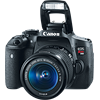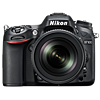Main
Model
Price
Advantages
launch
Announced
Body type
Camera subcategory
Sensor
Effective pixels
Max resolution
Sensor size
Sensor type
Processor
Image ratio w:h
Sensor photo detectors
Other resolutions
Image
ISO
Boosted ISO (maximum)
White balance presets
Custom white balance
Image stabilization
Uncompressed format
JPEG quality levels
Boosted ISO (minimum)
Photography features
Minimum shutter speed
Maximum shutter speed
Aperture priority
Shutter priority
Manual exposure mode
Subject / scene modes
Built-in flash
Flash range
External flash
Continuous drive
Self-timer
Metering modes
Exposure compensation
AE Bracketing
WB Bracketing
Flash modes
Screen / viewfinder
Articulated LCD
Screen size
Screen dots
Touch screen
Screen type
Live view
Viewfinder type
Viewfinder coverage
Viewfinder magnification
Videography features
Resolutions
File Format
Videography notes
Microphone
Speaker
Optics & Focus
Autofocus
Manual focus
Number of focus points
Lens mount
Focal length multiplier
Physical
Weight (inc. batteries)
Dimensions
Environmentally sealed
Battery
Battery details
Battery Life (CIPA)
Storage
Storage types
Connectivity
USB
HDMI
Microphone port
Headphone port
Wireless
Wireless notes
Remote control
Other features
Orientation sensor
GPS
Timelapse recording
GPS notes
Samples
Videos
Summary
The Nikon D7100 has larger sensor than the Canon EOS Rebel T6i: APS-C (23.5 x 15.6 mm) versus APS-C (22.3 x 14.9 mm). It is very important advantage of this model as large sensor lets you to shoot photos of the higher quality. The Nikon D7100 offers more number of white balance presets - 12. It gives you more control over colour. The Nikon D7100 provides more number of focus points than the Canon EOS Rebel T6i: 51 vs 19. More focus points means more convenience while attempting to focus on objects which are not centred.
The EOS Rebel T6i is equipped with articulated LCD which will allow you to take images from any interesting angle. The Nikon D7100 display is better as it offers more number of screen dots 1,228,800 in compare to 1,040,000 dots of the Canon EOS Rebel T6i screen. The higher dot count display is better for reviewing images on your camera. The Nikon D7100 is equipped with bigger size of the display - 3 inches. The EOS Rebel T6i is equipped with a touch screen.
The EOS Rebel T6i has built-in Wi-Fi which will help the camera owner to transfer photos quick and easy. The Nikon D7100 battery life is better in compare to the Canon EOS Rebel T6i battery life. In accordance with CIPA standards you will be able to capture 950 photos with the D7100 and only 440 with the EOS Rebel T6i. The EOS Rebel T6i weighs 555g that is 210g lighter than the weight of the Nikon D7100. The Nikon D7100 can utilize optional accessory GPS devices. Recording GPS data can be useful for the travel photographer, to be able to go into the image metadata and find out exactly where an image was produced.
The D7100 has 9 advantages and the Canon EOS Rebel T6i only 4 so the D7100 is the best choice. Get the lowest price on Amazon.


